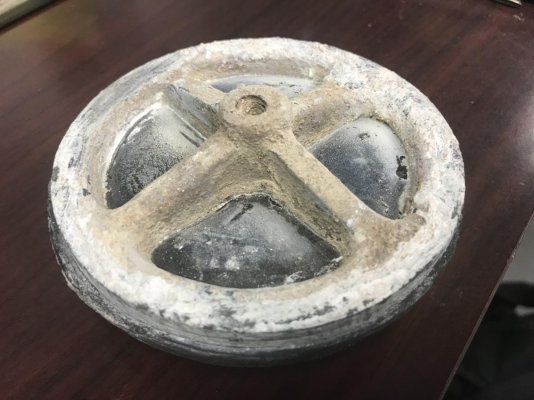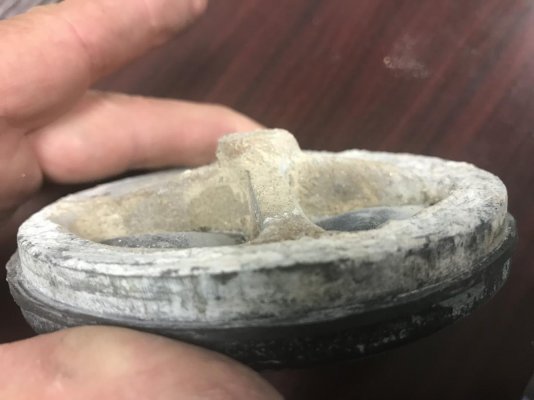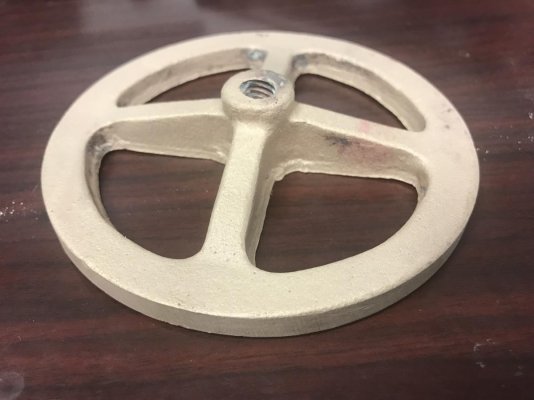Skeeter
Veteran Member
We were taking our boat out to run the engines on Monday, I just throttled up once the engines were up to temperature when my bilge alarm sounded continuously. Turned out the end casting with seal and cover attached had blown off my Stbd Engine heat exchanger (Lehman 120) and we were pumping raw water into the engine room.
No real problem, just had to shut the engine down and get back in our slip on one engine.
It seems a strange failure mode to me, the pencil zinc was situated right next to this end and was fairly new, maybe the soldered joint has corroded away and failed, there is no obvious corrosion to the cast ring just some calcification.
Does anyone have any ideas?
Thanks, Steve
No real problem, just had to shut the engine down and get back in our slip on one engine.
It seems a strange failure mode to me, the pencil zinc was situated right next to this end and was fairly new, maybe the soldered joint has corroded away and failed, there is no obvious corrosion to the cast ring just some calcification.
Does anyone have any ideas?
Thanks, Steve





